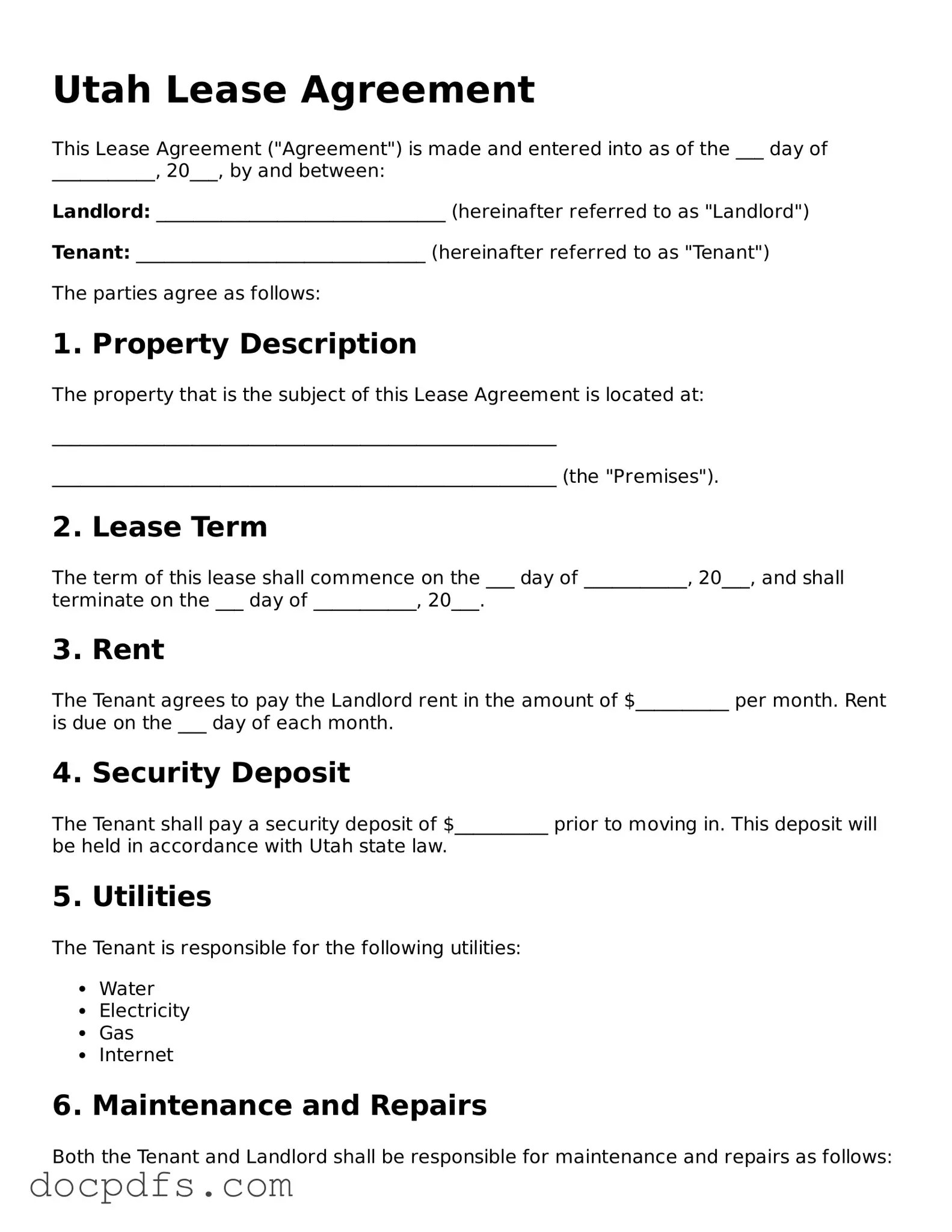A Utah Lease Agreement form is a legally binding document that outlines the terms and conditions under which a landlord rents property to a tenant in the state of Utah. This agreement details the rights and responsibilities of both parties, including rental payment amounts, duration of the lease, and rules regarding property maintenance and use. It serves to protect both the landlord and tenant by clearly defining expectations and obligations.
What are the key components of a Utah Lease Agreement?
Several essential elements should be included in a Utah Lease Agreement:
-
Parties Involved:
The full names of the landlord and tenant.
-
Property Description:
A detailed description of the rental property, including the address.
-
Lease Term:
The duration of the lease, whether it is month-to-month or for a fixed term.
-
Rent Amount:
The amount of rent due, payment methods, and due dates.
-
Security Deposit:
The amount required as a security deposit and conditions for its return.
-
Maintenance Responsibilities:
Outlines who is responsible for repairs and maintenance.
-
Termination Conditions:
The conditions under which the lease can be terminated by either party.
Is a written lease agreement required in Utah?
While a verbal agreement may be legally binding, it is highly advisable to have a written lease agreement in Utah. A written document provides clarity and serves as proof of the terms agreed upon. In disputes, having a written lease can significantly bolster one’s position. Thus, both landlords and tenants benefit from having a clear, documented agreement.
Can a lease agreement be modified once it is signed?
Yes, a lease agreement can be modified after it has been signed, but both parties must agree to the changes. It is important to document any modifications in writing to avoid misunderstandings in the future. This can be done through an amendment or addendum to the original lease. Ensure that both parties sign and date any changes to maintain clarity and enforceability.
What happens if a tenant fails to pay rent?
If a tenant fails to pay rent, the landlord has several options. Initially, the landlord may issue a notice to the tenant, typically providing a grace period for payment. If the rent remains unpaid, the landlord may begin the eviction process. It is crucial for landlords to follow the legal procedures set forth by Utah law to avoid complications. Tenants facing difficulty in making rent payments should communicate with their landlord to discuss possible solutions.
Are there specific laws governing lease agreements in Utah?
Yes, lease agreements in Utah are governed by both state and local laws. The Utah Code provides guidelines on various aspects of rental agreements, including security deposits, eviction procedures, and tenant rights. Familiarity with these laws is important for both landlords and tenants to ensure compliance and protect their rights. Consulting with a legal professional can provide valuable insights into specific situations.
What rights do tenants have under a Utah Lease Agreement?
Tenants in Utah have several rights under a lease agreement, including:
-
The right to a habitable living environment.
-
The right to privacy, meaning landlords cannot enter the property without proper notice.
-
The right to receive proper notice before eviction.
-
The right to return of the security deposit, provided the terms of the lease are met.
Understanding these rights is crucial for tenants to ensure they are treated fairly and to take appropriate action if their rights are violated.
